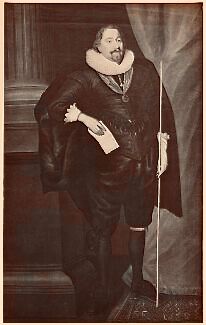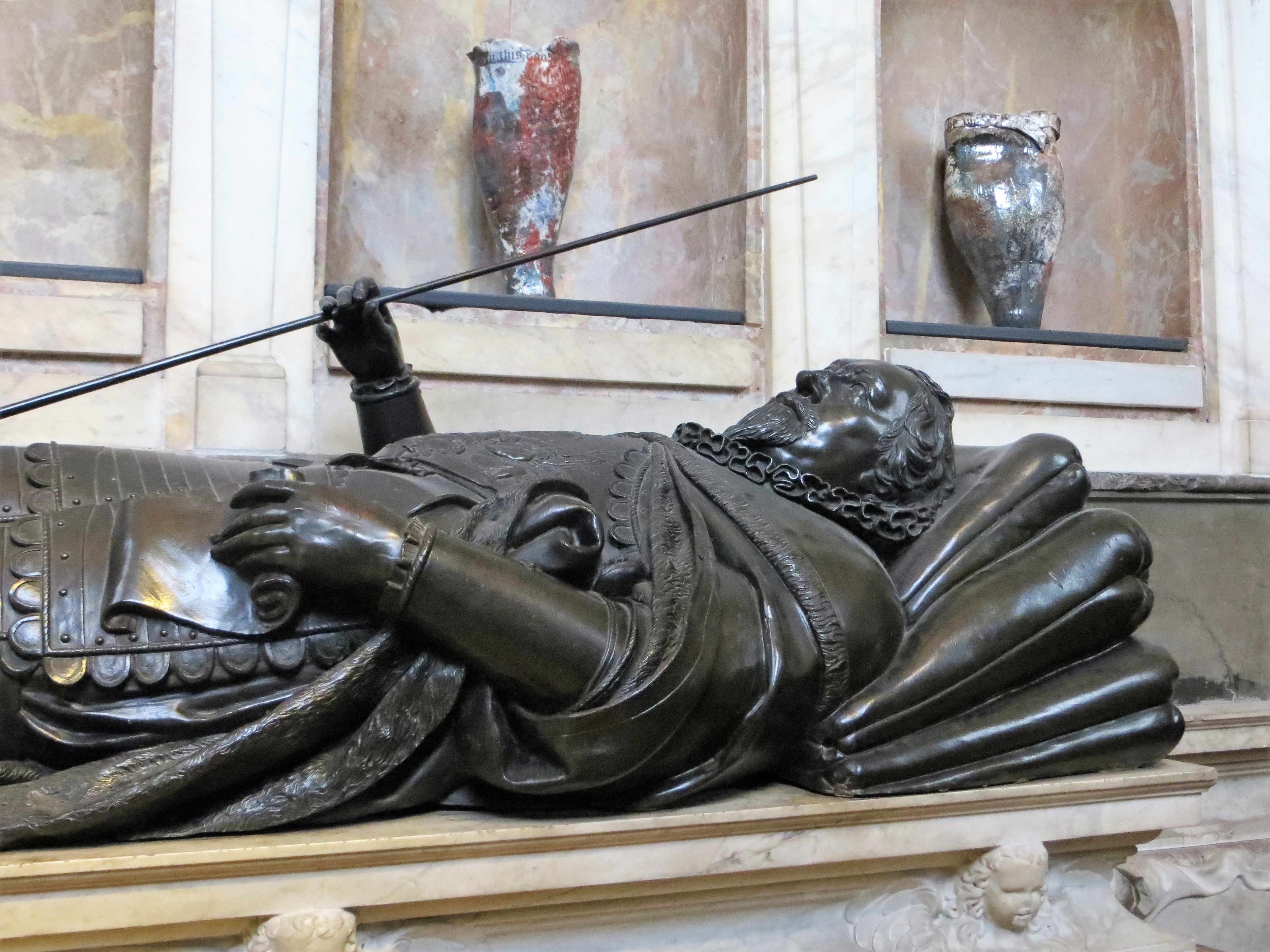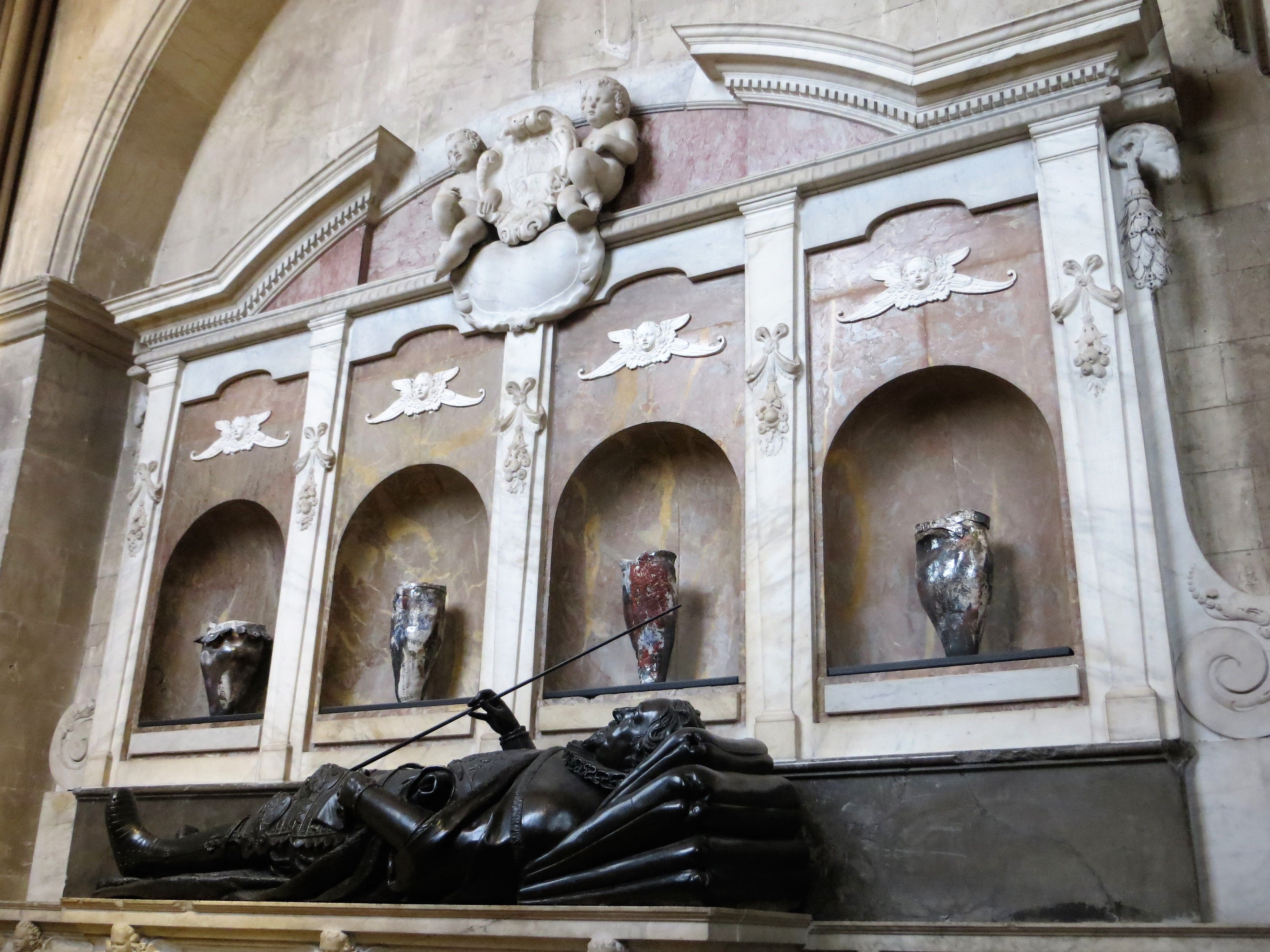* Chancellor of the Exchequer and later Lord Treasurer of England under James I and Charles I
* Created policies that enabled him to rule without raising taxes through Parliament.
* Student of the Middle Temple.
* Member of Parliament (MP)
* Knighted in 1603.
* Sent to embassies of Bohemia, Brussels, and Spain.
* Negotiated for the restitution of the Palatine.
* Incurred popular hatred as a (justly) suspected Roman Catholic, while also later earning the enmity of the (Catholic) queen, Henrietta Maria for refusing grants to her favourites.
* Opposed wars with Spain in 1623 and France in 1626
* Order of the Garter.
* 13 April 1628, as Baron Weston, of Neyland
Married 1 Elizabeth Pincheon of Writtle in Essex. 2 Frances Walgrave of Boreley in Essex.
Three children by his first marriage, including Lady Mary Weston (2 January 1603-after August 1678), who married the 2nd Lord Aston of Forfar in 1629.
Eight children by his second marriage, including Elizabeth Weston, who married the 2nd Viscount Netterville, and his son Thomas, who later succeeded as 4th Earl. His nephew, Jeremiah Clarke, became a Governor of Rhode Island in the American colonies.
Succeeded by son Jerome.
Earl of Portland is a title that has been created twice in the Peerage of England.∼
Richard Weston
Birthdate: March 1, 1577
Birthplace: East Farleigh, Kent, England
Death: Died March 13, 1635 in City of Bristol, Gloucestershire, England
Immediate Family:
Son of Sir Jerome Weston, Kt., of Skreens and Mary Weston
Husband of Elizabeth Weston and Frances Waldegrave
Father of Mary Weston; Lady Elizabeth Weston; Thomas Weston, 4th Earl of Portland; Jerome Weston, 2nd Earl of Portland; Lady Catherine White (Weston) and 2 others
Brother of Anne Weston; William Weston; Mary Weston; John Weston; Elizabeth Weston and 5 others
Occupation: 1st Earl of Portland, 1st Earl Portland
Richard Weston, 1st Earl of Portland, KG (1 March 1577 – 13 March 1634/1635), was Chancellor of the Exchequer and later Lord Treasurer of England under James I and Charles I, being one of the most influential figures in the early years of Charles I's Personal Rule and the architect of many of the policies that enabled him to rule without raising taxes through Parliament.
Weston was the eldest son and heir of Sir Hierome Weston, High Sheriff of Essex, and the former Mary Cave. He was born at Roxwell, Essex, and was a student of the Middle Temple. He served as Member of Parliament (MP) for a number of constituencies including Maldon (1601-1603), Midhurst (in the parliament of 1604-1611), Essex (in the Addled Parliament of 1614), Arundel (1622), Callington (1625) and Bodmin (1626). He was knighted in 1603.
During the reign of King James I of England, Weston was sent on embassies to Bohemia, Brussels, and Spain. On the last assignment, he negotiated for the restitution of the Palatine. Upon his return to England in 1621, he was made Chancellor of the Exchequer, and retained the post after the accession of Charles I; he proved a capable financial manager but incurred popular hatred as a (justly) suspected Roman Catholic, while also later earning the enmity of the (Catholic) queen, Henrietta Maria for refusing grants to her favourites. He opposed wars with Spain in 1623 and France in 1626, but managed to find ways of raising the money to fund them when required, even when it was impossible to secure the co-operation of Parliament.
Weston was elevated to the peerage on 13 April 1628, as Baron Weston, of Neyland. He was subsequently made Lord Treasurer of England and invested with the Order of the Garter. His policies proving highly unpopular, he escaped impeachment in 1629 only by the dissolution of Parliament. Nevertheless, he played an important role in the King's Personal Rule without Parliament, finding new sources of revenue while preventing any further increase in the King's expenditure, and being for a time the most influential of Charles's advisers. He persuaded the King to make peace with France in 1629 and Spain in 1630, removing the biggest drain on the treasury, and to sign the secret treaty with Spain in 1634. By the time he died in 1635, the Crown was solvent.
On 17 February 1633, Weston was created Earl of Portland. Lord Portland was married twice. His first wife was Elizabeth Pincheon of Writtle in Essex. His second wife was Frances Walgrave of Boreley in Essex. He had three children by his first marriage, including Lady Mary Weston (2 January 1603-after August 1678), who married the 2nd Lord Aston of Forfar in 1629. He had eight children by his second marriage, including Elizabeth Weston, who married the 2nd Viscount Netterville, and his son Thomas, who later succeeded as 4th Earl. His nephew, Jeremiah Clarke, became a Governor of Rhode Island in the American colonies.
On his death, he was succeeded by his second but eldest surviving son, Jerome.
Earl of Portland is a title that has been created twice in the Peerage of England. It was first created for the politician Richard Weston, 1st Baron Weston, in 1633. He was Chancellor of the Exchequer from 1621 to 1628 and Lord High Treasurer from 1628 to 1635, and had already been created Baron Weston, of Neyland in the County of Suffolk, in 1628. This title was also in the Peerage of England. He was succeeded by his son, the second Earl. He served as Joint Lord Lieutenant of Hampshire. His son, the third Earl, was killed at the Battle of Lowestoft in 1665. He was unmarried and was succeeded by his uncle, the fourth Earl. He was childless and on his death in 1688 the titles became extinct.
* Chancellor of the Exchequer and later Lord Treasurer of England under James I and Charles I
* Created policies that enabled him to rule without raising taxes through Parliament.
* Student of the Middle Temple.
* Member of Parliament (MP)
* Knighted in 1603.
* Sent to embassies of Bohemia, Brussels, and Spain.
* Negotiated for the restitution of the Palatine.
* Incurred popular hatred as a (justly) suspected Roman Catholic, while also later earning the enmity of the (Catholic) queen, Henrietta Maria for refusing grants to her favourites.
* Opposed wars with Spain in 1623 and France in 1626
* Order of the Garter.
* 13 April 1628, as Baron Weston, of Neyland
Married 1 Elizabeth Pincheon of Writtle in Essex. 2 Frances Walgrave of Boreley in Essex.
Three children by his first marriage, including Lady Mary Weston (2 January 1603-after August 1678), who married the 2nd Lord Aston of Forfar in 1629.
Eight children by his second marriage, including Elizabeth Weston, who married the 2nd Viscount Netterville, and his son Thomas, who later succeeded as 4th Earl. His nephew, Jeremiah Clarke, became a Governor of Rhode Island in the American colonies.
Succeeded by son Jerome.
Earl of Portland is a title that has been created twice in the Peerage of England.∼
Richard Weston
Birthdate: March 1, 1577
Birthplace: East Farleigh, Kent, England
Death: Died March 13, 1635 in City of Bristol, Gloucestershire, England
Immediate Family:
Son of Sir Jerome Weston, Kt., of Skreens and Mary Weston
Husband of Elizabeth Weston and Frances Waldegrave
Father of Mary Weston; Lady Elizabeth Weston; Thomas Weston, 4th Earl of Portland; Jerome Weston, 2nd Earl of Portland; Lady Catherine White (Weston) and 2 others
Brother of Anne Weston; William Weston; Mary Weston; John Weston; Elizabeth Weston and 5 others
Occupation: 1st Earl of Portland, 1st Earl Portland
Richard Weston, 1st Earl of Portland, KG (1 March 1577 – 13 March 1634/1635), was Chancellor of the Exchequer and later Lord Treasurer of England under James I and Charles I, being one of the most influential figures in the early years of Charles I's Personal Rule and the architect of many of the policies that enabled him to rule without raising taxes through Parliament.
Weston was the eldest son and heir of Sir Hierome Weston, High Sheriff of Essex, and the former Mary Cave. He was born at Roxwell, Essex, and was a student of the Middle Temple. He served as Member of Parliament (MP) for a number of constituencies including Maldon (1601-1603), Midhurst (in the parliament of 1604-1611), Essex (in the Addled Parliament of 1614), Arundel (1622), Callington (1625) and Bodmin (1626). He was knighted in 1603.
During the reign of King James I of England, Weston was sent on embassies to Bohemia, Brussels, and Spain. On the last assignment, he negotiated for the restitution of the Palatine. Upon his return to England in 1621, he was made Chancellor of the Exchequer, and retained the post after the accession of Charles I; he proved a capable financial manager but incurred popular hatred as a (justly) suspected Roman Catholic, while also later earning the enmity of the (Catholic) queen, Henrietta Maria for refusing grants to her favourites. He opposed wars with Spain in 1623 and France in 1626, but managed to find ways of raising the money to fund them when required, even when it was impossible to secure the co-operation of Parliament.
Weston was elevated to the peerage on 13 April 1628, as Baron Weston, of Neyland. He was subsequently made Lord Treasurer of England and invested with the Order of the Garter. His policies proving highly unpopular, he escaped impeachment in 1629 only by the dissolution of Parliament. Nevertheless, he played an important role in the King's Personal Rule without Parliament, finding new sources of revenue while preventing any further increase in the King's expenditure, and being for a time the most influential of Charles's advisers. He persuaded the King to make peace with France in 1629 and Spain in 1630, removing the biggest drain on the treasury, and to sign the secret treaty with Spain in 1634. By the time he died in 1635, the Crown was solvent.
On 17 February 1633, Weston was created Earl of Portland. Lord Portland was married twice. His first wife was Elizabeth Pincheon of Writtle in Essex. His second wife was Frances Walgrave of Boreley in Essex. He had three children by his first marriage, including Lady Mary Weston (2 January 1603-after August 1678), who married the 2nd Lord Aston of Forfar in 1629. He had eight children by his second marriage, including Elizabeth Weston, who married the 2nd Viscount Netterville, and his son Thomas, who later succeeded as 4th Earl. His nephew, Jeremiah Clarke, became a Governor of Rhode Island in the American colonies.
On his death, he was succeeded by his second but eldest surviving son, Jerome.
Earl of Portland is a title that has been created twice in the Peerage of England. It was first created for the politician Richard Weston, 1st Baron Weston, in 1633. He was Chancellor of the Exchequer from 1621 to 1628 and Lord High Treasurer from 1628 to 1635, and had already been created Baron Weston, of Neyland in the County of Suffolk, in 1628. This title was also in the Peerage of England. He was succeeded by his son, the second Earl. He served as Joint Lord Lieutenant of Hampshire. His son, the third Earl, was killed at the Battle of Lowestoft in 1665. He was unmarried and was succeeded by his uncle, the fourth Earl. He was childless and on his death in 1688 the titles became extinct.
Family Members
Advertisement
Explore more
Sponsored by Ancestry
Advertisement














